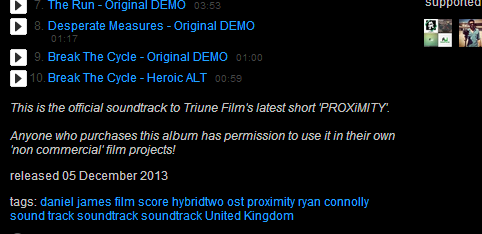 |
| LWL review, Poster and film. |
The task we were given was too make 3 film media products which included: film poster, film review and short film. We also carried out research planning for all three of these, as well as consistently improving our blogs. A short film can range from as little as two minutes too 10 minutes each with different plot, story-lines and genres. As well as the ancillary product (the short film) we had to also concentrate on making a brilliant film review and poster. Our group did a certain amount of research and all created our own poster, however only one being the final product. All media products have conventions which allow audiences to be able to identify what they are. For the media products we had to create they all had typical conventions which we had to follow. These conventions can tell audiences what to expect in the film they are about to watch or tell audiences the genre when they are watching the film. These conventions can relate to the content of the media, such as articles, character stereotypes or the medium such as film or magazines. These conventions exist across all media platforms. Although conventions may differ slightly in different media products depending on content, purpose and audience. I think the fact that the main protagonist of our film was Asian already challenges the conventions of thriller but also any film, because finding a film where the main character is Asian is very rare. Our main character is played by an Asian, this is unusal in most types of thrillers because film directors usually tend to keep with people of White or Black efnicity. Asian people generally are precieved as a weaker efnicity or terrorists during films and not an protagonist. I have not seen many films where an Asain plays a hero.
Only since the last ten years have Asian people been represented in a better way. The hit 'Bend it like Beckham' was the first time where the main character was a female Asian. This was a huge stepping stone for more Asian, not just females but also males try to get more lead roles within big films. A poll BBC conducted shows that 78% of people think that ethnic minorities are better represented on television now compared to 10 years ago. A clear indication as to how far people for different efnicity have come in the world of film. Before 1980's, Asian people were never on T.V, during the 80's the slowly came on T.V, but they were not given major roles, only small roles and stereotyped as; corner shop owners; taxi drivers; restaurant owners.
On September 11th 2001, one thing happened that would change everyone’s perceptions of Asian people: suicide bombers crashed into the twin towers (in America, New York), causing total devastation and hatred between white and Asian communities. After that Asian people were labelled as terrorists, suicide bombers, being stopped by police just because they were Asian. On 7th July 2005 another attack happened but this time in London. 7 main stations were bombed in London and a bus which just fuelled the hatred for Asian people. There were a series of shootings and stabbings aimed at black people and they were killed. The media attacked it and made people believe that all Asians for at fault.
![Advanced Portfolio [Elliott, Ziaul, Keelan]](https://blogger.googleusercontent.com/img/b/R29vZ2xl/AVvXsEhc9HXgDtI9wcruaR4vodp1qAt9VYWwfo1RbL6YzVVRkTUb1J2bGm4EtEaNASxVkdamH6CcISa45M8XQ3sCPZPnIRWcToFd0gY7RwHUiiKnI1PydxM8QGxA70GqOLDO2I-w-Ws3Nyrx3jsh/s1600/blog+banner2k13+2.png)





